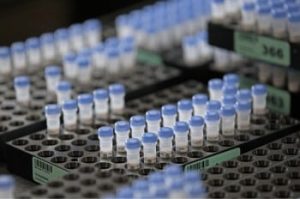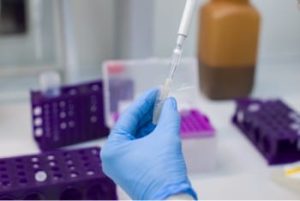Modified Bases Modifications
Affinity Plus Modified Bases
Locked nucleic acids—Affinity Plus modified bases
Affinity Plus modified bases are locked nucleic acids. Addition of locked nucleic acid monomers help to increase and can be used to fine-tune sequence melting temperature (Tm). These bases also confer significant in vitro and in vivo nuclease resistance. Learn more about the benefits of including Affinity Plus bases in your oligo and probe sequences by visiting our Locked nucleic acid technology page. When ordering, denote Affinity Plus bases in your sequence using +A, +G, +C, +T. You can include up to 20 Affinity Plus bases in Affinity Plus DNA & RNA Oligonucleotides, and up to 6 Affinity Plus bases in Affinity Plus qPCR Probes.
2’-O-methoxy-ethyl Bases (2’-MOE)
2’-MOE bases are often used for antisense oligos (ASO), aptamers, and siRNA. Compared to standard RNA bases 2’-MOE bases offer increased resistance to nuclease degradation, reduced toxicity, and increased affinity for binding to complimentary RNA. For more information on antisense technologies and strategies please see: Antisense oligonucleotides.
2-MethoxyEthoxy A
View product details for 2-MethoxyEthoxy A:
2-MethoxyEthoxy MeC
View product details for 2-MethoxyEthoxy MeC:
2-MethoxyEthoxy G
View product details for 2-MethoxyEthoxy G:
2-MethoxyEthoxy T
View product details for 2-MethoxyEthoxy T:
2'-O-Methyl RNA Bases
2'-O-Methyl RNA Bases
2'-O-Methyl RNA is a naturally occurring modification of RNA found in tRNA and other small RNAs that arises as a post-transcriptional modification. Oligonucleotides can be directly synthesized that contain 2'-O-Methyl RNA. This modification increases Tm of RNA:RNA duplexes but results in only small changes in RNA:DNA stability. It is stabile with respect to attack by single-stranded ribonucleases and is typically 5 to 10-fold less susceptible to DNases than DNA. It is commonly used in antisense oligos as a means to increase stability and binding affinity to the target message. To include a 2’ O-methyl modification in your RNA sequence, simply place a lowercase "m" in front of the base; for example, mAmGmCmU.
Fluoro Bases
2' Fluoro bases have a fluorine modified ribose which increases binding affinity (Tm) and also confers some relative nuclease resistance when compared to native RNA. These modifications are commonly employed in ribozymes and siRNAs to improve stability in serum or other biological fluids.
Fluoro C
View product details for Fluoro C:
Fluoro U
View product details for Fluoro U:
Fluoro A
View product details for Fluoro A:
Fluoro G
View product details for Fluoro G:
Additional
Puromycin
An antibiotic that mimics transfer RNA. Puromycin binds in the ribosome's A site, forms a peptide bond with the growing peptide chain, and blocks further peptide elongation. By linking puromycin to mRNA, a peptide-RNA fusion product results from the translation of the message linking the encoding mRNA with its peptide product.
View product details for Puromycin:
8-oxo dG
8-oxo dG allows investigation of the structure and activity of oligonucleotides containing an 8-oxo mutation which is formed naturally when DNA is subjected to oxidative conditions or ionizing radiation. 5,6-Dihydro pyrimidines are naturally occurring compounds that are structural components of alanine transfer RNA. Dihydrouracil and the hydroxy pyrimidines are major base damage products formed by exposure of DNA to ionizing radiation.
View product details for 8-oxo dG:
Int Ribo
Useful for analyzing RNA structure and activity relationships
View product details for Int Ribo:
deoxyAdenosine
N6-Methyl-2'-deoxyAdenosine (4) may find its utility in carcinogenesis studies
View product details for deoxyAdenosine:
N6-Methyl rA
Reversible epigenetic modifications on genomic DNA and histone have been known to substantially regulate gene expression.
View product details for N6-Methyl rA:
2-Aminopurine
2-Aminopurine can substitute for dA in an oligonucleotide. It is a naturally fluorescent base that is sensitive to the local environment making it a useful probe for monitoring the structure and dynamics of DNA hairpins and for detecting the base stacking state of a duplex. 2-Aminopurine can be destabilizing and slightly lower the Tm.
View product details for 2-Aminopurine:
5-Bromo dU
5-Bromo-deoxyuridine is a photoreactive halogenated base that can be incorporated into oligonucleotides to crosslink them to DNA, RNA or proteins with exposure to UV light. Crosslinking is maximally efficient with light at 308 nm.
View product details for 5-Bromo dU:
deoxyUridine
DeoxyUridine (dU) can be substituted for dT in DNA oligonucleotides. The base can be removed by the enzyme uracil-N-deglycosylase (UNG) which renders the oligo susceptible to strand scission. One common use of this strategy is to eliminate amplified DNA and prevent cross-contamination.
View product details for deoxyUridine:
2,6-Diaminopurine (2-Amino-dA)
This modified base can form three hydrogen bonds when base-paired with dT and can increase the Tm of short oligos by as much as 1-2°C per insertion. This effect, however, is complex and is dependent on sequence context.
View product details for 2,6-Diaminopurine (2-Amino-dA):
Dideoxy-C
Dideoxycytidine (ddC) is a 3’ chain terminator that prevents 3’ extension by DNA polymerases.
View product details for Dideoxy-C:
deoxyInosine
Historically, the first universal base employed was 2’-deoxyInosine (dI). DeoxyInosine is a naturally occurring base that, while not truly universal, is less destabilizing than mismatches involving the four standard bases. Hydrogen bond interactions between dI and dA, dG, dC and dT are weak and unequal, with the result that some base-pairing bias does exist with dI:dC > dI:dA > dI:dG > dI:dT. When present in a DNA template, deoxyInosine preferentially directs incorporation of dC in the growing nascent strand by DNA polymerase.
View product details for deoxyInosine:
Hydroxymethyl dC
Hydroxymethyl dC is a recently discovered modified base with a probable epigenetic role.
View product details for Hydroxymethyl dC:
Inverted dT
Inverted dT can be incorporated at the 3’-end of an oligo, leading to a 3’-3’ linkage which inhibits both degradation by 3’ exonucleases and extension by DNA polymerases.
View product details for Inverted dT:
Iso-dG
View product details for Iso-dG:
Iso-dC
View product details for Iso-dC:
Inverted Dideoxy-T
Placing Inverted Dideoxy-T at the 5’ end of a sequence will prevent unwanted 5’ ligations.
View product details for Inverted Dideoxy-T:
5-Methyl dC
5-Methyl deoxyCytidine when substituted for dC will increase the Tm by as much as 0.5°C per insertion. In addition, the presence of 5-Methyl dC in CpG motifs can prevent or limit unwanted immune responses that otherwise occur if oligos are administered in vivo, which is of particular importance in antisense applications.
View product details for 5-Methyl dC:
5-Nitroindole
5-Nitroindole is currently the best universal base available. It does not favor any particular base-pairing (i.e., it does not support base-specific hydrogen bond formation), but does contribute to duplex stability through base-stacking interactions. Therefore, it is not as destabilizing to the duplex as mismatches between the standard bases. 5-Nitroindole directs random incorporation of any specific base when used as a template for DNA polymerase and partially blocks enzyme processivity.
View product details for 5-Nitroindole:
Super T®
Super T (5-hydroxybutynl-2’-deoxyuridine) is a duplex-stabilizing modified base that increases oligonucleotide Tm. Oligonucleotides containing Super T can be extended normally by polymerases, including Taq polymerase,making Super T a useful modified base for designing short primers or probes for low-complexity, A-T rich sequences
View product details for Super T®:
Super G®
Super G (8-aza-7-deazaguanosine) is a modified base that eliminates naturally occurring, non-Watson-and-Crick secondary structures associated with guanine-rich sequences. Oligonucleotides containing Super G can be extended normally by polymerases, including Taq polymerase, making Super G a useful modified base for designing guanine-rich primers and probes. In addition, unlike standard guanine bases, Super G does not quench fluorophores, potentially improving probe performance
View product details for Super G®:





















